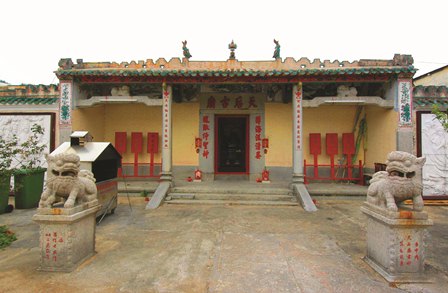Origin of Belief in Tin Hau and Relevant Cultural Relics
Legendarily, Tin Hau (Celestial Empress) was born to a Lin family in Putian county of Fujian province of China on the 23rd day of the 3rd lunar month. She was named “Moniang” (silent girl) for she did not cry during a month after birth. She had saved many lives of seafarers and was thus enshrined in temples by coastal inhabitants. The emperors of China of different dynasties had apotheosized her with a variety of divine titles, like Tin Hau (Celestial Empress), which was conferred to her by Emperor Kangxi of Qing dynasty. By the name of the Temple, it should be dated within the Kangxi era. This assumption is further supported by an inscriptional record of the Temple.Seated at the eastern tip of Coloane’s urban district, the Tin Hau Temple had undergone several major reconstructions, as stated in its different inscriptional tablets. The oldest relic it houses is an ancient bell dated back to the 28th year of reign of Emperor Qianlong of Qing dynasty (1763).
The Tin Hau Temple is the oldest temple across Coloane, housing the statues of seven principal deities in three halls. It is second in size to Pak Tai Temple of Taipa when it comes to architectural scale of temples of outlying islands.











